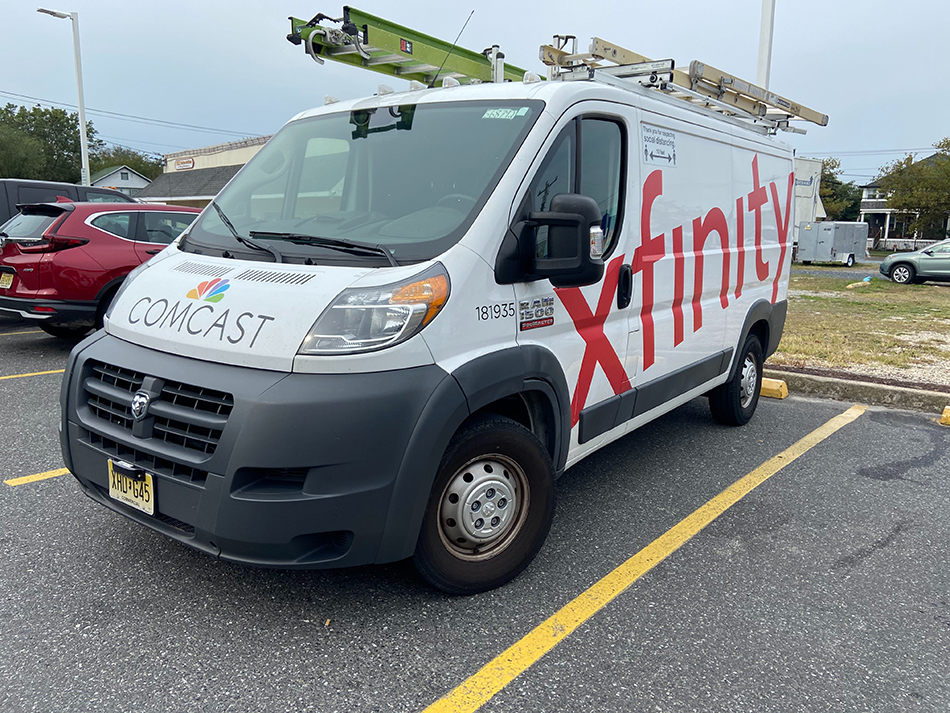Comcast Reports Flat Broadband Growth in Q2
A loss of 10,000 residential customers is offset by a 10,000 gain in business subscribers, setting tone for rest of the year

Comcast reported zero broadband subscriber additions in the second quarter, one of its worst performing periods ever in that metric, soundly missing analysts' estimates, while wireless subscribers continued their strong showing, rising by 317,000, its best second quarter ever.
The slowdown in broadband additions has affected all cable operators after record growth during the pandemic, but most analysts weren’t expecting growth to bottom out so soon for the largest U.S. cable operator. Analysts’ consensus estimates for the quarter were for 84,000 broadband additions, although some analysts predicted higher or lower additions.
Also: Losses at Flat Peacock Take Bite Out of NBCU Media Earnings
The flat additions drove Comcast shares down nearly 9% ($3.82 each) to $39.55 in early trading July 28. Other cable stocks followed suit: Charter was down 7%, Altice USA fell 6% and Cable One was down 3% in early trading Thursday.
For the quarter, Cable segment revenue was up 3.7% to $16.6 billion and cash flow rose 5.3% to $7.4 billion. Consolidated revenue was up 5.1% to $30 billion and cash flow increased 10% to $9.8 billion.
Also: Eyes Will Be On Comcast Q2 Broadband Results
In a research note, Wells Fargo Securities media analyst Steven Cahall wrote that while Comcast’s flat broadband performance won't move the needle on earnings per share or free cash flow much, “the market remains concerned about what net adds indicate for growing competition and how cable will have to respond.”
Multichannel Newsletter
The smarter way to stay on top of the multichannel video marketplace. Sign up below.
Heading into Comcast’s results, Cahall noted, Wall Street was anticipating about 340,000 broadband subscriber additions in the second half of 2022 and more than 700,000 additions for the full year.
“[W]e expect those numbers to fall (again) along with 2023E consensus net adds of [about] 800,000,” Cahall wrote. “Follow-on concerns include what happens to broadband ARPU growth and capex at Cable Communications if, in fact, Comcast is entering a more intense competitive environment due to Fixed Wireless Access at the low end and fiber at the high end.”
Comcast first launched high-speed Internet service via third-party provider @Home in 1996 and has added customers ever since. In 2002, the company brought high-speed service entirely in-house on its own network and quarterly customer additions fell below 100,000 just once — 65,000 in Q2 2009.
On a high note, mobile wireless subscriber additions were 317,000, the company's best second quarter ever. So far this year, wireless has added about 635,000 wireless lines and ended the period with a total of 4.6 million wireless customers. ■
Mike Farrell is senior content producer, finance for Multichannel News/B+C, covering finance, operations and M&A at cable operators and networks across the industry. He joined Multichannel News in September 1998 and has written about major deals and top players in the business ever since. He also writes the On The Money blog, offering deeper dives into a wide variety of topics including, retransmission consent, regional sports networks,and streaming video. In 2015 he won the Jesse H. Neal Award for Best Profile, an in-depth look at the Syfy Network’s Sharknado franchise and its impact on the industry.

